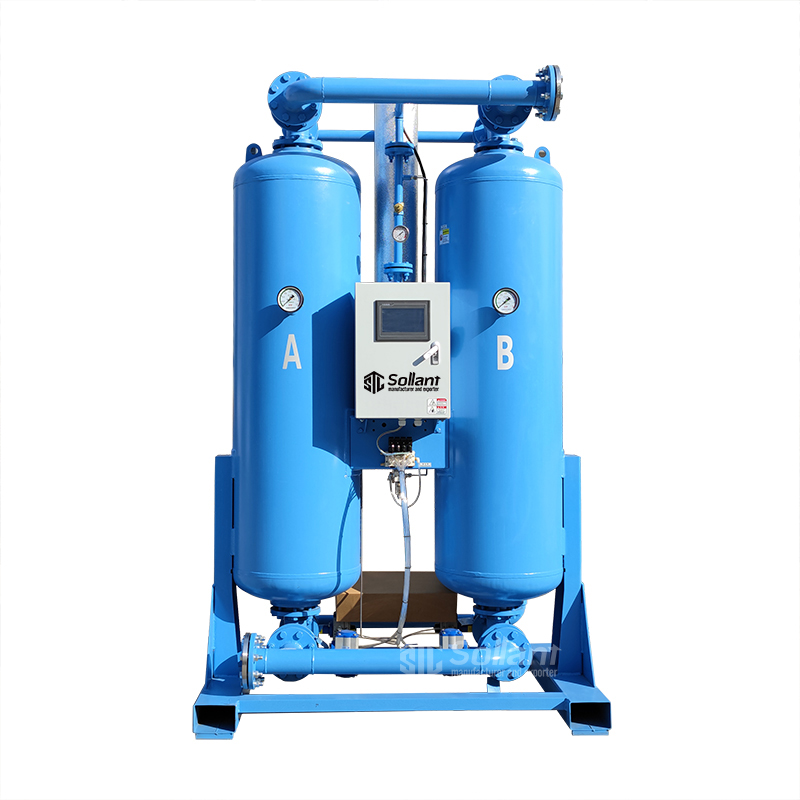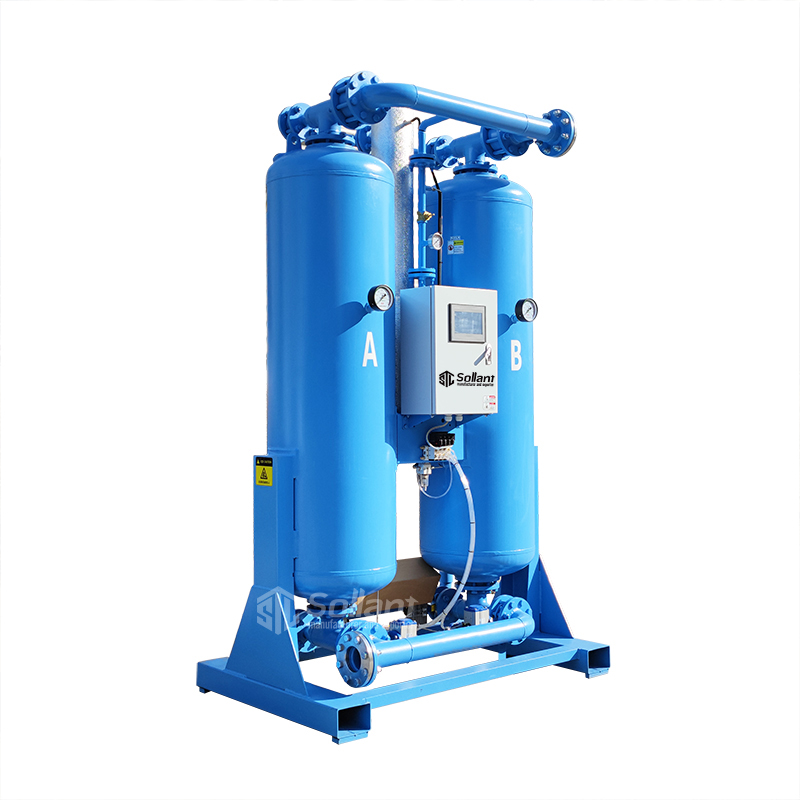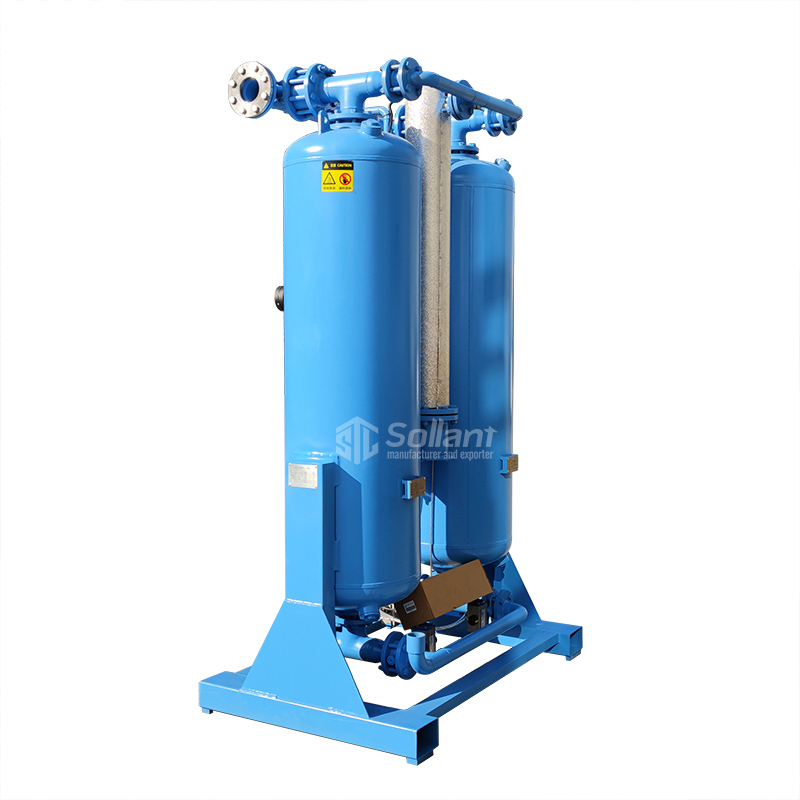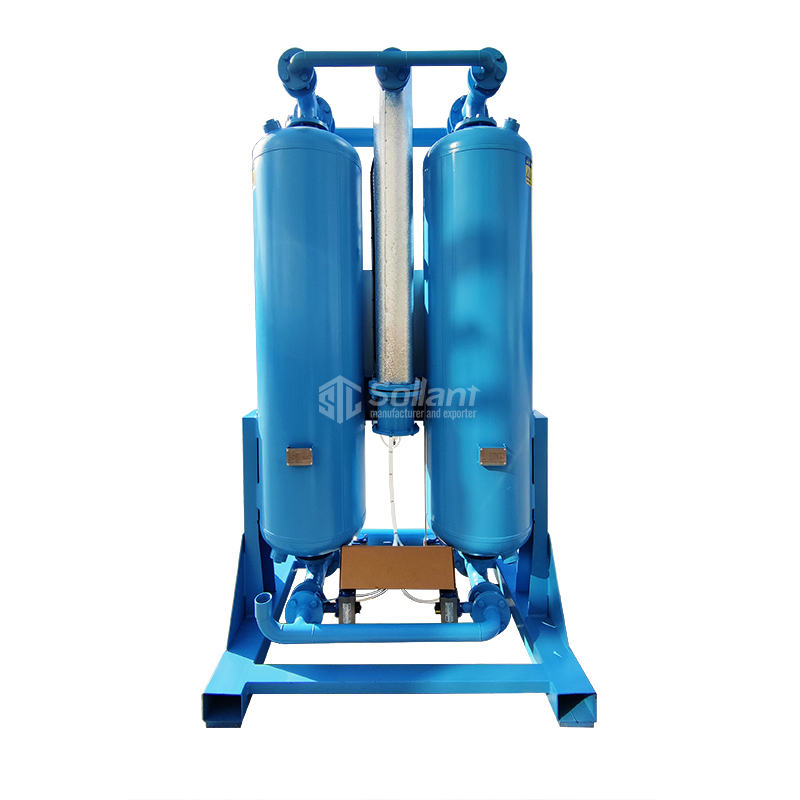What is a zero air consumption dryer?

The suction dryer is one of the common post-processing equipment for air compressors. Its main function is to purify and dry compressed air oil, dust, odor and moisture. However, the compressed air will lose some pressure more or less after being processed by the suction dryer. This situation is called pressure drop, also called air consumption. So, have you heard of zero air consumption vacuum dryers?

- What is a zero air consumption dryer?
According to the type, dryers can be divided into refrigerated type, heatless regeneration type, slight heat regeneration type, blast regeneration type, waste heat regeneration type and so on. The zero-gas consumption waste heat regenerative dryer is the most energy-saving and gas-saving dryer among them. The waste heat dryer uses the waste heat of the oil-free air compressor to heat and regenerate the adsorbent, making full use of the waste heat in the air compression system to achieve the effect of heating the dryer without using a heating device.


- Advantages of zero air consumption dryer
The zero-gas consumption waste heat regeneration adsorption dryer matches the exhaust temperature of the air compressor and completely utilizes the waste heat of the air compressor for regeneration. It does not require a blower and heater to participate in the regeneration process. There is no power consumption of heaters and blowers, and at the same time it reduces Equipment failure rate due to blowers and heaters.
- Disadvantages of zero air consumption dryers

Although the zero air consumption blower dryer also achieves zero air consumption, due to the addition of a blower, heater, and cooler, the energy consumption also increases greatly. Therefore, from the perspective of energy saving, it is not a good choice. . In the zero-gas consumption blast dryer, due to the addition of the blower, the dryer that was originally a static device has become a moving device. The blower needs to be shut down frequently for maintenance, which brings inconvenience to the user’s production continuity.
Sollant Focus on Energy Saving



